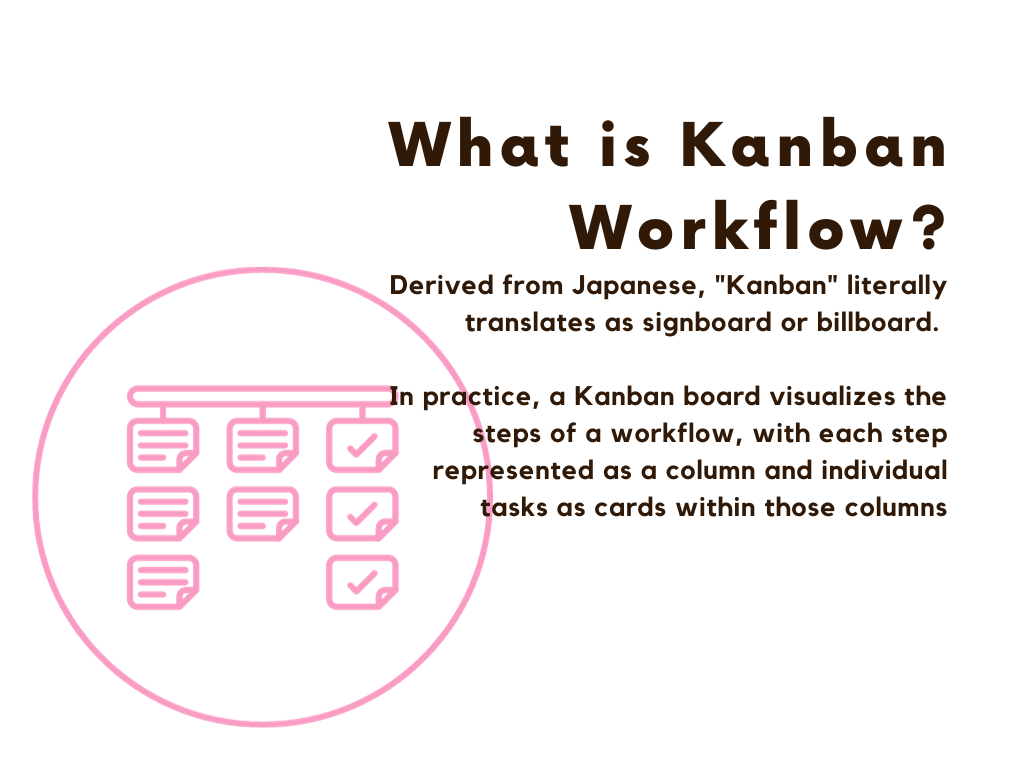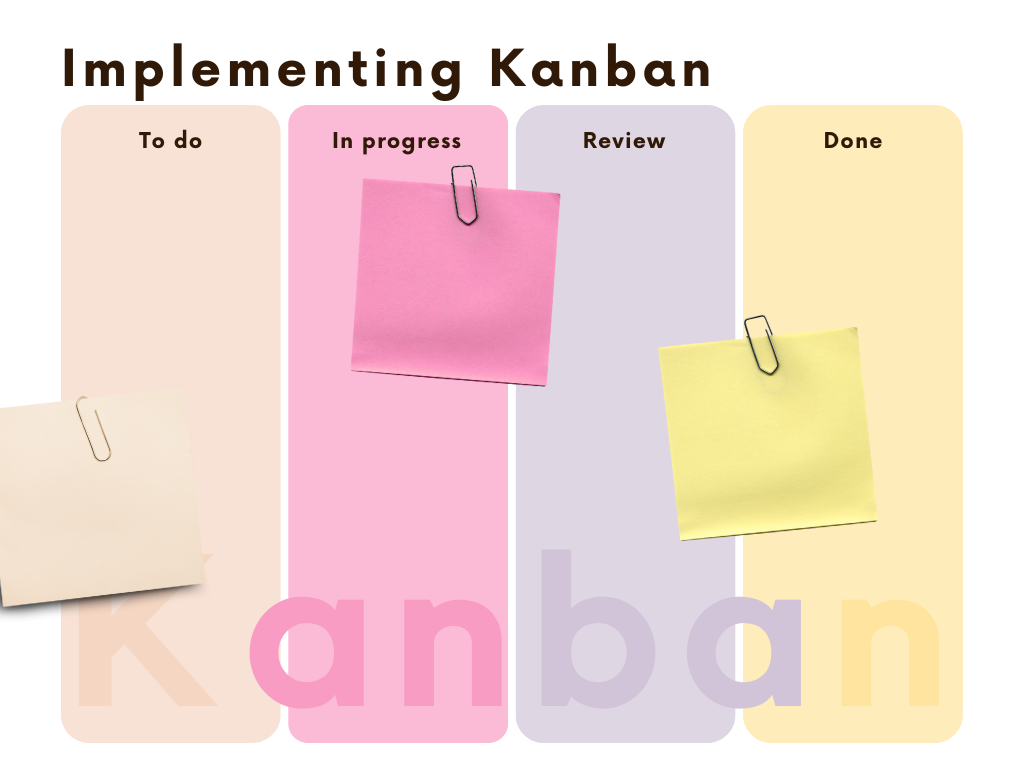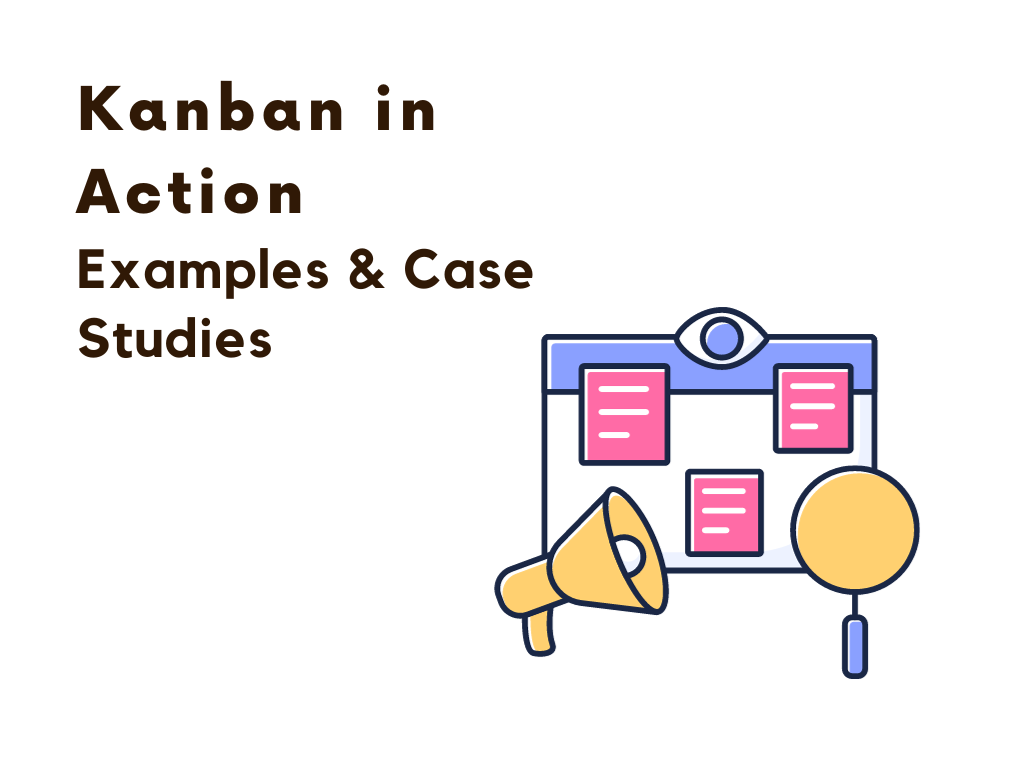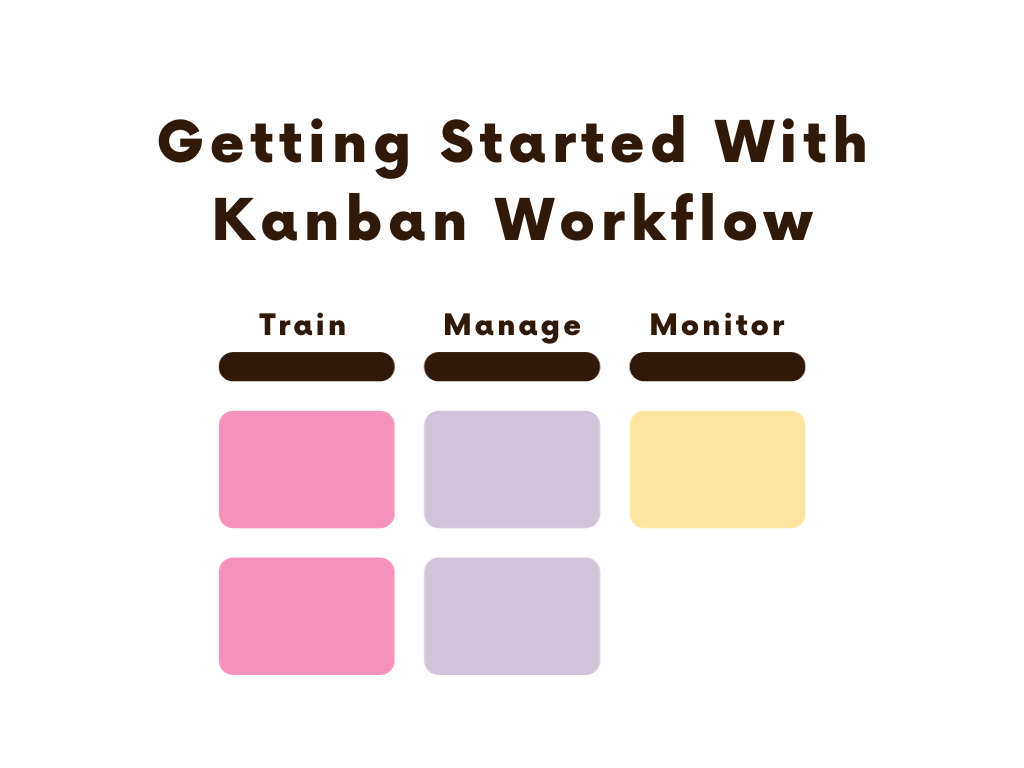Table of Contents:
- What Is Kanban? Defining the Kanban Methodology
- Core Principles of Kanban: Visualization, Limit Work in Progress, Manage Flow
- Implementing Kanban: Boards, Cards, Swimlanes, and Other Tools
- Kanban in Action: Examples and Case Studies
- Best Practices for Getting Started With Kanban: Training, Change Management, Metrics
Introduction
As an effective project management methodology, Kanban has gained popularity in recent years. If you're looking for ways to increase your productivity and efficiency, Kanban may be the solution you need.
Kanban emphasizes continuous improvement, flexibility, and high visibility to keep your projects running smoothly.
In this article, you'll learn the fundamentals of Kanban, including its definition, principles, methods, and examples to implement in your own workflow.
With the right approach, Kanban can help you and your team gain better control of work in progress, increase throughput, and achieve a sustainable pace of delivery.
By following the simple yet impactful principles of Kanban, you'll be on your way to improved collaboration, higher quality work, and greater work-life balance.
What Is Kanban? Defining the Kanban Methodology

Kanban, originating from Japan, is an inventory control system used initially in the Toyota Production System as a method to optimize inventory levels and responsiveness.
The core concept of a Kanban workflow revolves around visualizing work items, limiting work-in-progress (WIP), and creating an environment that encourages continuous improvement.
It helps teams work together more efficiently by using visual boards with cards representing work items that move through the workflow.
This provides full visibility into the progress and status of projects.
Core Principles of Kanban
There are a few core principles that guide the Kanban method:
- Visualize the workflow: The visual board makes the entire process transparent and clear. Anyone can see the current status of work at a glance.
- Limit work in progress: This means limiting the number of cards in each column of the board. It reduces bottlenecks and maximizes efficiency. Teams focus on finishing work before starting new items.
- Manage flow: The flow of cards through the board represents the progress of work. Teams aim to keep work flowing smoothly from left to right. Blockages or overflow in any column indicates a need to adjust the process.
- Make policies explicit: The rules of the workflow are clearly outlined. All team members understand definitions of done, hand-off procedures, prioritization methods, and more. This avoids confusion and rework.
- Implement feedback loops: Regular meetings, known as "stand-ups," provide opportunities for feedback. Teams discuss what's working, not working, and make continuous improvements to optimize their process.
- Improve collaboratively (evolutionary change): Teams start where they are and make small, incremental changes to improve. There is no "perfect" Kanban system. Teams adapt it to their unique needs and improve it over time..
Core Principles of Kanban: Visualization, Limit Work in Progress, Manage Flow
To properly implement the Kanban method, you must understand its core principles:
Visualization
Kanban uses visual boards to display work and workflow. Tasks are represented visually on the board, allowing team members to see the state of work at a glance.
This visibility provides transparency into the process and progress. Often, physical boards with sticky notes are used, but digital boards are also popular.
Limit Work in Progress
Kanban limits the amount of unfinished work to keep teams focused and avoid being overburdened or losing quality. Work in progress (WIP) limits are set for each stage of the workflow and the team is not allowed to exceed these limits.
This helps identify process bottlenecks and ensures work flows smoothly through the system.
Manage Flow
The flow of work moving through the Kanban system should be continuously monitored and improved. Kanban optimizes flow by balancing the number of tasks in each stage of the workflow.
When flow slows or stops due to overloading or bottlenecks, the WIP limits and policies may need adjustment. The team can then make data-driven decisions to keep work moving efficiently.
Kanban's iterative approach allows for continuous improvement by revealing bottlenecks and waste in the process.
When applied properly, Kanban leads to increased productivity, efficiency, and quality.
Implementing Kanban: Boards, Cards, Swimlanes, and Other Tools

To implement the Kanban method, you will need to set up a Kanban board. A Kanban board visually displays the workflow and progress of work items that flow through your process.
The board contains columns representing the different stages of your workflow. Work items, represented by cards, move from left to right as work is completed.
Kanban cards contain information about the work item, like a task description, priority, due date, and assignee. The cards allow you to track the progress of each work item on the board.
Swimlanes are horizontal rows on the Kanban board that help organize work items by category or team member.
Each swimlane contains its own set of workflow columns. Swimlanes provide an easy way to visualize work that is categorized or assigned to different teams or individuals.
A cumulative flow diagram can be used to analyze how work items are flowing through your Kanban system.
The diagram shows the number of items in each workflow state over time. It helps identify process bottlenecks and optimize workflow.
Other useful tools for Kanban include:
- Burndown charts to track work completed over time.
- A prioritization matrix to evaluate work item priorities.
- A work in progress (WIP) limits to control how much-unfinished work is in a workflow state. WIP limits improve flow and reduce bottlenecks.
- A feedback loop to continuously improve the Kanban system. Teams meet regularly to discuss what's working, not working, and make tweaks to improve workflow.
Kanban in Action: Examples and Case Studies

Kanban methods have been implemented by many well-known companies to improve their operations and better serve their customers.
Software Development
Kanban is widely used in software development for managing product backlogs, sprint planning, and bug tracking.
For example, the Kanban board would typically organize tasks into columns such as "Backlog", "In-Progress", "Testing", and "Completed".
This allows the team to visualize their work, limit work-in-progress, and maintain a steady workflow.
For example, Toyota pioneered the Kanban system in the 1940s to optimize their just-in-time manufacturing.
By limiting work in progress, Toyota was able to increase efficiency and reduce waste.
Similarly, Spotify adopted Kanban to manage software development. They visualized their workflow on a physical board with columns for different development stages.
This allowed teams to limit work in progress, optimize their flow, and deliver value to users faster.
Manufacturing
Originally designed to support lean manufacturing, Kanban is naturally effective in this industry.
A typical use of Kanban in manufacturing is to signal when more materials or components are needed.
This can help to minimize inventory and avoid overproduction, keeping production as efficient as possible.
A notable example is Zara, a global clothing retailer. Zara uses a pull-based replenishment system inspired by Kanban to align their supply chain with actual customer demand.
By postponing final manufacturing until the last possible moment, Zara can design and produce clothing that closely matches current fashion trends.
This just-in-time approach and limiting overproduction have been key to Zara’s success.
Marketing
In a marketing team, a Kanban board may represent stages such as "Ideas", "In Progress", "Review", and "Published".
Marketing tasks, such as creating blog posts, designing infographics, or preparing email campaigns, are managed through these stages to ensure a steady, balanced workflow.
Human Resources
HR professionals can use a Kanban system to track recruitment or onboarding processes.
For example, a recruitment Kanban board may have columns for "Potential Candidates", "Interview Stage", "Final Review", and "Hired".
It can also be useful for monitoring and managing employee training and development programs.
Content Management
Whether it is a newspaper editorial staff or a blog content team, Kanban is useful for managing work processes.
Tasks can be broken down into stages like "Ideation", "Writing", "Editing", "Design", "Review", and "Published".
This helps teams to track the progress of individual content pieces, visualize output, and manage resources more effectively.
Best Practices for Getting Started With Kanban: Training, Change Management, Metrics

To successfully implement Kanban, focus on these best practices:
Provide adequate training
For Kanban to be effective, all team members must fully understand the Kanban method and principles.
Comprehensive training on the Kanban framework, workflow, metrics, and tools helps ensure everyone is on the same page.
Teams should learn about limiting work in progress (WIP), visualizing the workflow, and continuously improving the process.
Hands-on practice with Kanban tools and simulations are valuable for reinforcing concepts.
Manage change carefully
Kanban represents a new way of working for most teams and can be disruptive if not properly introduced. Team leaders should communicate the reasons for the change to gain buy-in.
Start with a pilot Kanban project to demonstrate benefits before rolling it out more widely.
Provide coaching and address questions or concerns from team members. Incremental change is less disruptive, so teams can start by visualizing just a part of their workflow before expanding Kanban to other work areas.
Monitor metrics and make data-driven decisions
Metrics like cycle time, throughput, and work-in-progress (WIP) limits provide visibility into the Kanban process.
Teams should review metrics regularly to see if improvements are needed. For example, if cycle time is increasing, it may indicate too much WIP or blocked work items.
Adjust WIP limits or rebalance the workflow based on data, not assumptions. Over time, metrics can be used to demonstrate quantifiable benefits of Kanban like reduced cycle times, improved quality, and increased productivity.
Conclusion
As you have learned, Kanban is a popular project management methodology centered around visualizing workflow, limiting work in progress, and maximizing efficiency.
By starting with what you do now, implementing continuous improvement, and respecting current roles and responsibilities, you can reap the benefits of improved productivity and quality.
Kanban provides the framework - you provide the details for your unique situation. With time and practice, the Kanban method can become second nature and help propel your projects and organization to new heights of performance and success.
The possibilities for improved collaboration, faster delivery, reduced waste, and better quality are endless. Why not give Kanban a try?







